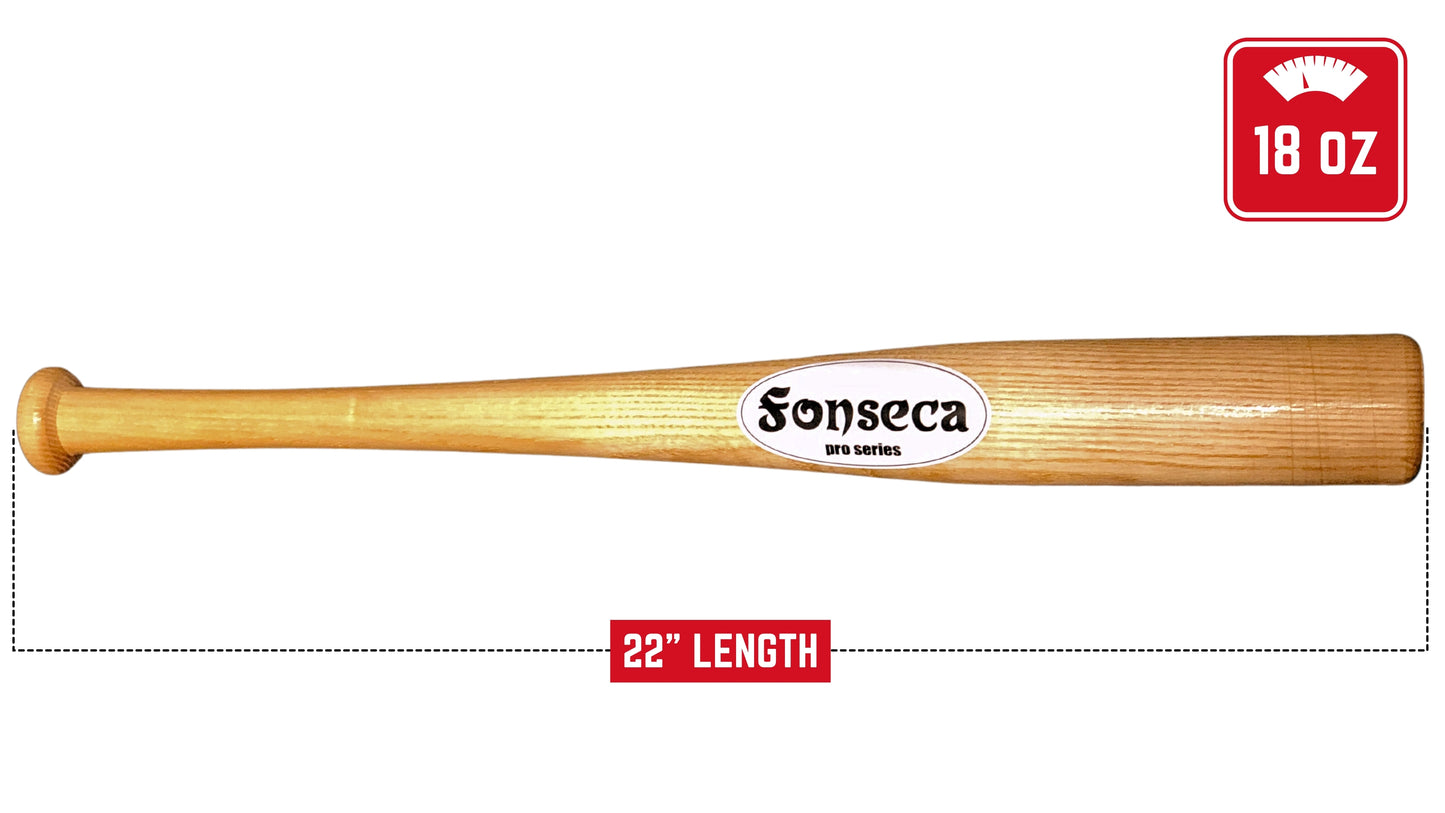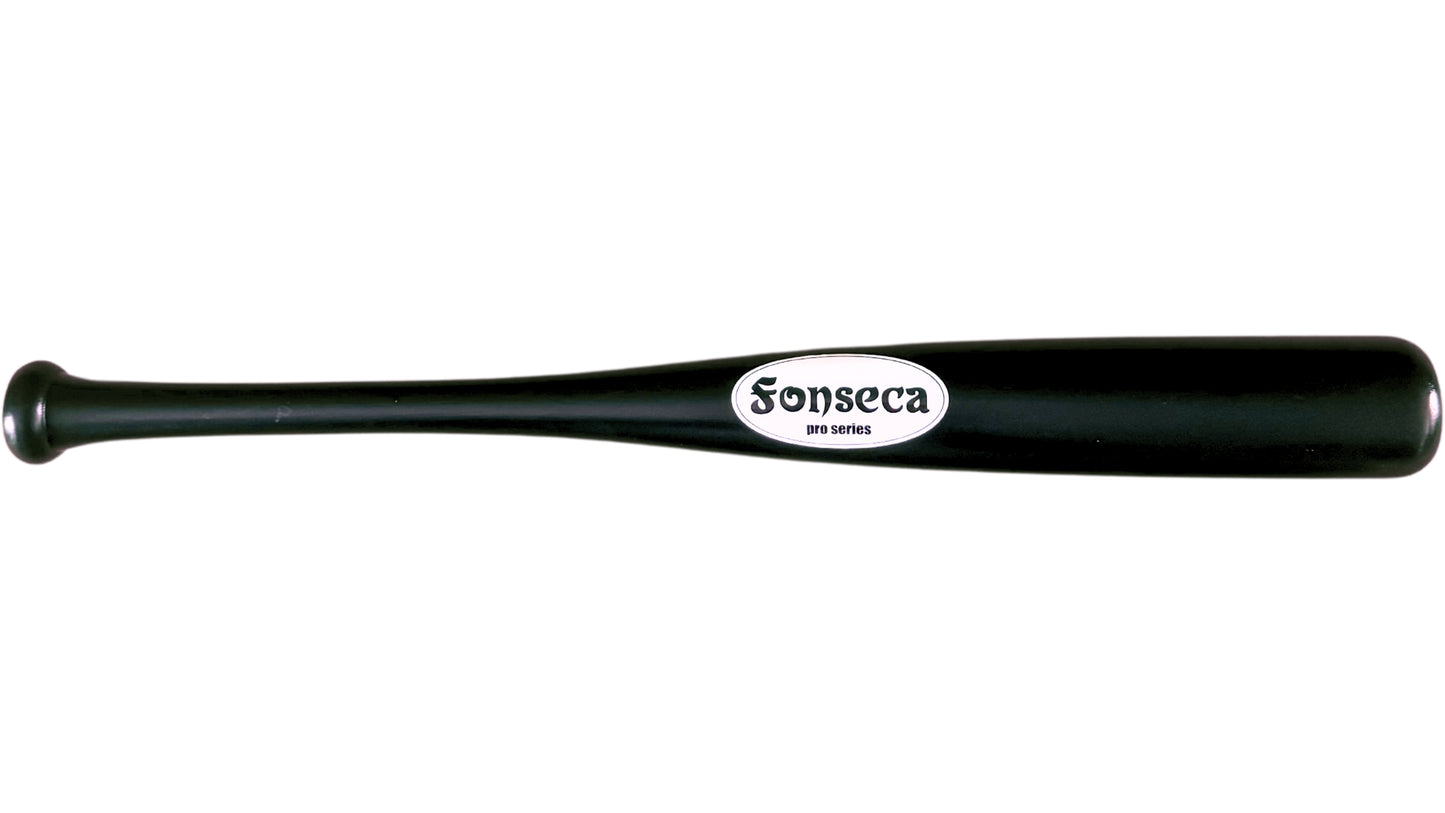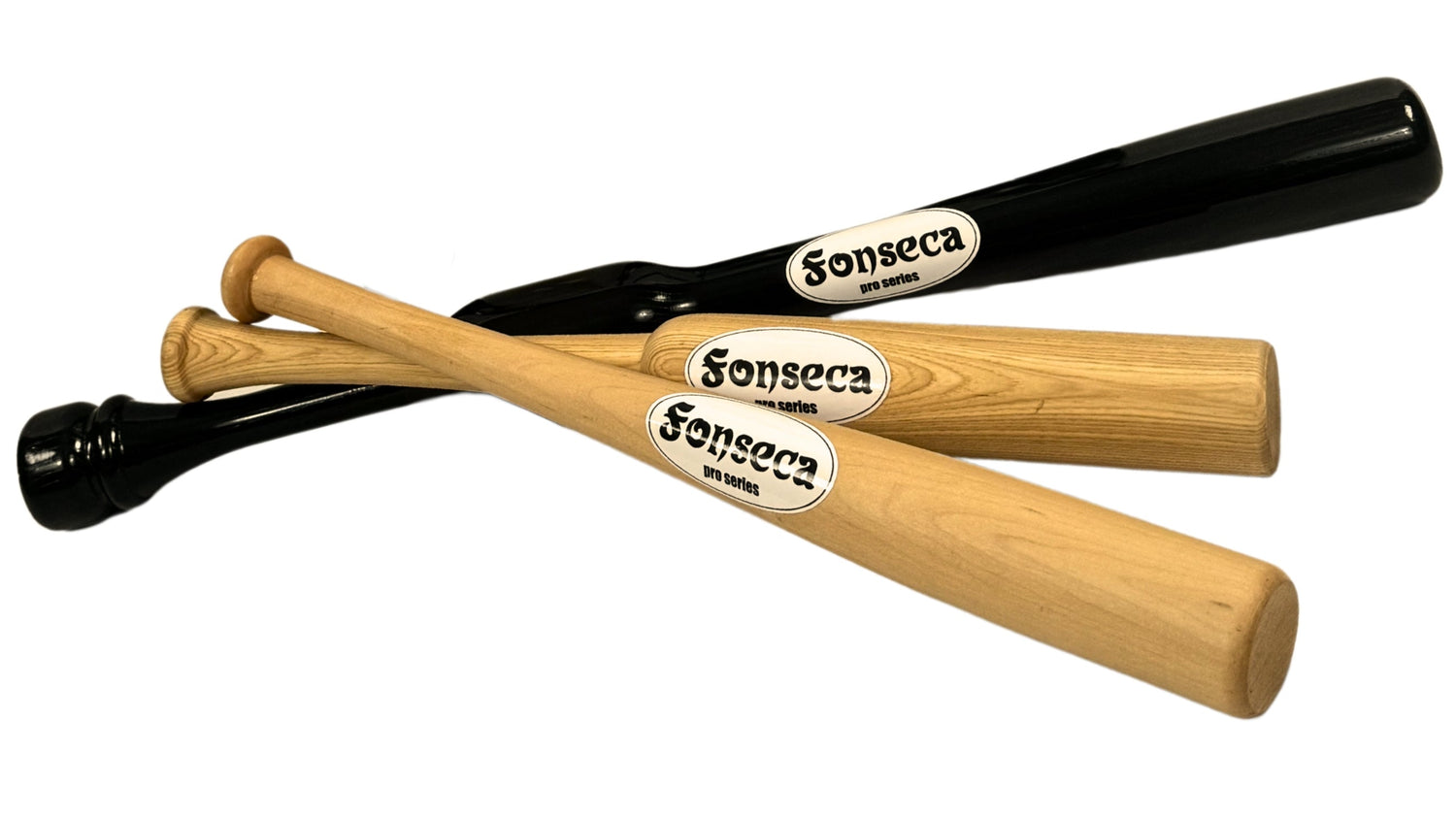Fonseca Pro Series
The Thumper
The Thumper
Couldn't load pickup availability
**The Thumper is not designed for live Batting Practice or machine pitch**
Share



This bat is a little league version of our baseball training bats. It is a short, 22-inch bat that has a 2 1/4" width and is designed for one-handed (top and bottom hand drills) as well as two handed swings. swinging can be very beneficial for your training.
This bat is a little league version of our baseball training bats. It is a short, 22-inch bat that has a 2 1/4" width and is designed for one-handed (top and bottom hand drills) as well as two handed swings. swinging can be very beneficial for your training.
- Enhanced Hand Strength: These bats help to increase the strength in your hands, wrists, and forearms, which are crucial for a powerful swing.
- Improved Hand-Eye Coordination: Focusing on one-handed swings allows you to better concentrate on the connection between your eyes and your hands, improving your overall hand-eye coordination.
- Refined Mechanics: Using a one-handed bat can help you focus on the finer details of your swing mechanics, making sure each part of your swing is efficient and effective.
- Better Control: Training with a smaller, lighter bat can help you develop better control and precision in your swings, which can translate to more accurate hitting.
- Versatility: These bats are great for a variety of drills, including one-handed swings, soft toss, and tee work, making them a versatile addition to your training regimen.
- Enhanced Hand Strength: These bats help to increase the strength in your hands, wrists, and forearms, which are crucial for a powerful swing.
- Improved Hand-Eye Coordination: Focusing on one-handed swings allows you to better concentrate on the connection between your eyes and your hands, improving your overall hand-eye coordination.
- Refined Mechanics: Using a one-handed bat can help you focus on the finer details of your swing mechanics, making sure each part of your swing is efficient and effective.
- Better Control: Training with a smaller, lighter bat can help you develop better control and precision in your swings, which can translate to more accurate hitting.
- Versatility: These bats are great for a variety of drills, including one-handed swings, soft toss, and tee work, making them a versatile addition to your training regimen.
Warm-Up:
Step 1: Begin with a proper warm-up to get your muscles ready. This can include dynamic stretches, arm circles, and light cardio exercises.
Step 2: Perform some wrist and forearm stretches to prepare for the one-handed swings.
Grip:
Step 1: Hold the bat with one hand, using your top hand (right hand for right-handers, left hand for left-handers).
Step 2: Ensure a firm yet relaxed grip, with your knuckles aligned.
Stance:
Step 1: Stand with your feet shoulder-width apart, knees slightly bent, and weight evenly distributed.
Step 2: Keep your head still and eyes focused on the pitcher's release point.
Dry Swings:
Step 1: Begin with dry swings (without hitting a ball) to get a feel for the one-handed motion.
Step 2: Focus on maintaining proper swing mechanics, including a smooth, fluid motion and proper follow-through.
Step 3: Perform 15-20 swings, concentrating on different aspects of your swing each time (e.g., hand path, contact point, follow-through).
Tee Work:
Step 1: Set up a batting tee and place a ball on it.
Step 2: Take your stance and focus on hitting the ball off the tee with one hand, maintaining proper mechanics.
Step 3: Perform 10-15 swings, concentrating on consistent contact and hitting through the ball.
Soft Toss:
Step 1: Have a partner toss balls to you underhand from the side.
Step 2: Focus on maintaining your form and making solid contact with each one-handed swing.
Step 3: Perform 10-15 swings, adjusting your timing and technique as needed.
Cool-Down:
Step 1: After your training session, perform a cool-down routine, including static stretches for your arms, shoulders, and torso.
Step 2: Hydrate and rest to allow your muscles to recover.
Warm-Up:
Step 1: Begin with a proper warm-up to get your muscles ready. This can include dynamic stretches, arm circles, and light cardio exercises.
Step 2: Perform some wrist and forearm stretches to prepare for the one-handed swings.
Grip:
Step 1: Hold the bat with one hand, using your top hand (right hand for right-handers, left hand for left-handers).
Step 2: Ensure a firm yet relaxed grip, with your knuckles aligned.
Stance:
Step 1: Stand with your feet shoulder-width apart, knees slightly bent, and weight evenly distributed.
Step 2: Keep your head still and eyes focused on the pitcher's release point.
Dry Swings:
Step 1: Begin with dry swings (without hitting a ball) to get a feel for the one-handed motion.
Step 2: Focus on maintaining proper swing mechanics, including a smooth, fluid motion and proper follow-through.
Step 3: Perform 15-20 swings, concentrating on different aspects of your swing each time (e.g., hand path, contact point, follow-through).
Tee Work:
Step 1: Set up a batting tee and place a ball on it.
Step 2: Take your stance and focus on hitting the ball off the tee with one hand, maintaining proper mechanics.
Step 3: Perform 10-15 swings, concentrating on consistent contact and hitting through the ball.
Soft Toss:
Step 1: Have a partner toss balls to you underhand from the side.
Step 2: Focus on maintaining your form and making solid contact with each one-handed swing.
Step 3: Perform 10-15 swings, adjusting your timing and technique as needed.
Cool-Down:
Step 1: After your training session, perform a cool-down routine, including static stretches for your arms, shoulders, and torso.
Step 2: Hydrate and rest to allow your muscles to recover.
You should start seeing improvements in your swing mechanics and bat speed within the first few weeks of consistent practice. However, the exact timeline can vary based on your current skill level and dedication to the training plan.
You should start seeing improvements in your swing mechanics and bat speed within the first few weeks of consistent practice. However, the exact timeline can vary based on your current skill level and dedication to the training plan.



